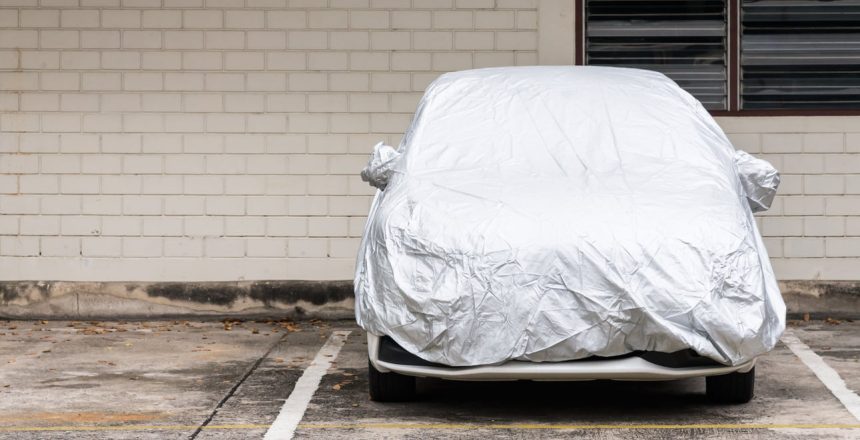Taking a few precautions can help your vehicle avoid issues when it sits for months at a time
Whether you’re putting your car into storage for the winter or shipping it to another part of the country, a vehicle that isn’t getting any use could run into mechanical and physical difficulties. Allowing it to sit for a few days or weeks without moving isn’t a concern. However, when that timeline expands into months or longer, you should take a few steps to make sure it starts up and drives when you come back to it.
Here’s a look at some things you can do to ensure your car looks and runs great when you’re finally ready to get it back on the road.
Key takeaways
- Storage can cause problems for cars
- Shipping leads to issues, too
- Preparing your vehicle for storage or shipping is important
1. Fill the gas tank
Although you won’t be driving your vehicle, it’s still a good idea to fill the gas tank before putting it into storage. A full gas tank prevents moisture from getting into the fuel system, which can lead to corrosion.
Use a fuel stabilizer to ensure the gas is usable once you start the car again. These additives pull moisture from the gas and prevent it from oxidizing and gumming up the system while in storage. Stabilizers are easy to apply, just pour the prescribed amount into your tank and drive around for a few minutes to get it circulating.
2. Search for leaks
You must identify and seal any leaks before putting your car into storage. You could end up with a mess if you don’t repair these issues early, and then you might be on the hook for any damage your leak does to the storage facility.
Some storage buildings and transport trucks won’t take your car if it has an aggressive leak, so inspect the undercarriage in the days leading up to your start date to ensure you don’t have a problem.
Finding a leak is a relatively straightforward process. Just put a sheet of cardboard under the car for the night and check it in the morning. If the cardboard is clean, you’re good to go.
3. Complete basic maintenance
Make sure you conduct the necessary maintenance before putting your vehicle into storage. That way, it should start right up when you come back to it.
Key maintenance jobs to do before putting a vehicle into storage include:
- Change the oil
- Rotate the tires
- Check the air pressure
- Add coolant, brake fluid, and transmission fluid
- Inspect the belts and hoses
- Replace the air filters
If you’re aren’t comfortable completing these tasks on your own, a mechanic can do them quickly and easily. All of these jobs are part of basic car maintenance anyway, so they shouldn’t be too much trouble to finish before putting your car into storage.
4. Remove the battery
When storing your vehicle for three months or more, removing the battery and keeping it in a warm, dry location can help extend its life. You might also consider attaching it to a trickle charger to ensure that it’s in working order when you’re ready to reinstall it.
Removing the battery isn’t usually necessary for short-term storage, although you might need a jump if you’ve stored the car in cold weather.
5. Clean it inside and out
Cleaning your vehicle before putting it into storage can help protect your paint from damage. When you allow dirt, salt, and other contaminants to sit on your car for months at a time, it can lead to rusting and other issues.
You can prevent this problem by cleaning the outside of your car before storing it for any length of time. As a bonus, washing the car before putting it into storage means the vehicle will look great when you’re ready to drive it again.
Tidying the inside of the car isn’t vital from a performance standpoint, but it ensures that you don’t end up missing some items that you’re keeping in your vehicle. It also eliminates much of the risk of theft if you aren’t storing your car in a secure location.
Additional tips for shipping a vehicle
Generally, shipping a vehicle to another part of the country won’t keep it off the road for months. Depending on where you’re sending the car, you’ll likely have access to it after a few days or, at the very most, weeks.
At the same time, there are a few steps you should take to prepare your car for shipping. For example, you should clean your vehicle thoroughly and check for leaks before putting it on a transport truck. That way, it becomes more likely that your car will arrive at its destination in great shape.
It’s also worth noting that it’s easier to spot damage on a clean vehicle. From an insurance standpoint, you must identify shipping damage early to receive reimbursement. Washing your car makes it easier to detect scratches and scrapes in your paint that might’ve happened along the way.
You won’t want to fill your gas tank before shipping your car because it adds extra weight to the truck. Keep your fuel below a quarter tank to lighten the load and reduce the odds of damage during shipment.
The vehicle shipping vendor you select also has a hand in maintaining your vehicle’s condition and using a broker like Mercury Auto Transport can ensure you end up with a good one. We only work with reputable carriers, so you can trust that your car is in the best possible hands throughout transport. Contact us to request a quote or to speak with one of our professional car shipping representatives.






